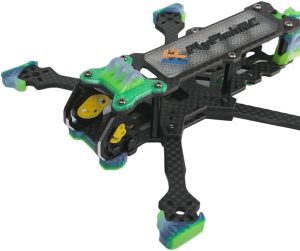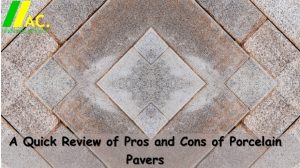Introduction
G10-FR4 is a composite material which is made up of glass fabric and electrical grade epoxy resin. This material is manufactured by pairing glass fabric with epoxy resin under high pressure and heat. It was first introduced in 1950s. It was originally termed as “G10”, but today with an addition of flaming retardant, it is known as G10-FR4. The term G10 means that it is a glass reinforced material whereas FR4 means Fire Retardant Grade 4. This means it has flame resistance properties. G10-FR4 is one of the most widely used laminate materials in engineering.
G10-FR4 is a famous material in engineering. Its success is due to its versatile properties and fire resisting properties. This high pressure and heat gives the material strong mechanical properties like strength, stiffness, creep resistance and many more. It also gives it strong electrical properties. The combination of strong mechanical and powerful electrical properties gives this material a versatile and universal nature.
Scope
G10-FR4 have scope in various departments of manufacturing. It covers a broad range of the following applications:
- Printed Circuit Boards (PCBs)
- Electromechanical devices
- Rocket cases
- Insulators
- Structural components
Comparison with other High-Performing Materials
G10-FR4 is though a great material for engineering applications but there are also some high-performing materials which are also used in various engineering applications and are of utmost importance. In this article, we shall discuss the properties of those materials and compare them with G10-FR4.
- Ceramics
Ceramics are one of the most commonly used materials in engineering field. Their applications are worldwide. Ceramics have high resistance to heat and temperature which make them similar to G10-FR4. In terms of hardness, ceramics are considered hard and durable materials but G10-FR4 are much harder and durable than ceramics. Ceramics can be brittle and then can easily be broken. This property makes G10-FR4 better than ceramics. G10-FR4 are more sustainable. Ceramics are used in fiber-optics, cooktops, plugs etcetera.
- Carbon Fiber Reinforced Polymer (CFRP)
Carbon Fiber Reinforced Polymer (CFRP) is one of the most famous composite materials in the world which is used for repairing and strengthening of concrete structures in the world. It is really valuable for structural and civil engineers. Carbon Fiber Reinforced Polymer (CFRP) has high strength and stiffness. This makes them strong and applicable in various industries like aerospace, construction etcetera. These materials are even stronger than G10-FR4 but are costly to manufacture. This shortcoming gives G10-FR4 an upper hand because of its economic effectiveness.
- Micarta
Micarta is a composite material that is commonly used for knife handles in knife making industries. It is made by pressing and laminating layers of fabric with a resin. Micarta is very similar to G10-FR4 in many aspects. It offers high strength and durability. It also has resistance to temperature. However, there are also some differences between G10-FR4 and Micarta which makes them applicable for different conditions. Micarta has one advantage over G10-FR4, it has a slightly rough texture which offers a good grip. The biggest difference comes in cost. Micarta is expensive than G10-FR4 and is more difficult to use. This trait makes it appropriate to use for experienced knife makers. However, G10-FR4 is easy to use and is cost-effective.
- Metal Alloys
A metal alloy is generally a composition of metal with non-metal materials. They are used in automobile industries, aerospace industries, construction industries etcetera. The most common metal alloy is steel. Metal alloys are stronger and more suitable for heavy load conditions than G10-FR4. They are also better capable of operating in high temperature conditions. However, in terms of cost-effectiveness, G10-FR4 take a lead. They are less expensive than metal alloys. They also have anti-corrosion propensities. Metal alloys are good conductors while G10-FR4 have better insulation.
- Polyimides
Polyimides are one of the best and classical materials to use in engineering designs. They have been used for decades. The key difference between polyimides and G10-FR4 is in their behavior in high temperatures. The operating temperature for G10-FR4 is within 140 degrees. However, polyimides are capable of operating in higher temperatures like 260 degrees. This makes them high temperature resistant than G10-FR4. There is also a key difference in the way these materials react to moisture. Polyimides are not better absorbers of moisture while G10-FR4 are good moisture absorbers. This makes them better suited to use in humid conditions.
Conclusion
To conclude, this analysis shows us that G10-FR4 is better than other high-performance materials. It has advantages in hardness, durability, cost-effectiveness etcetera. However, there are some domains where other materials are better than G10-FR4 but in terms of versatility, no material beats G10-FR4. It is the best composition in engineering so far.




